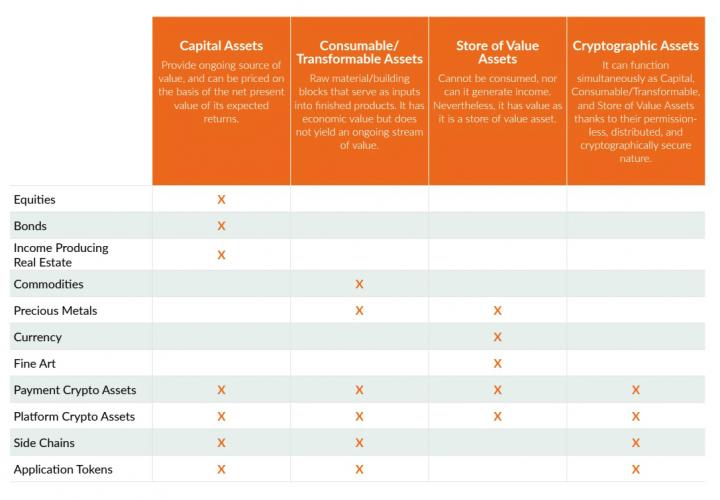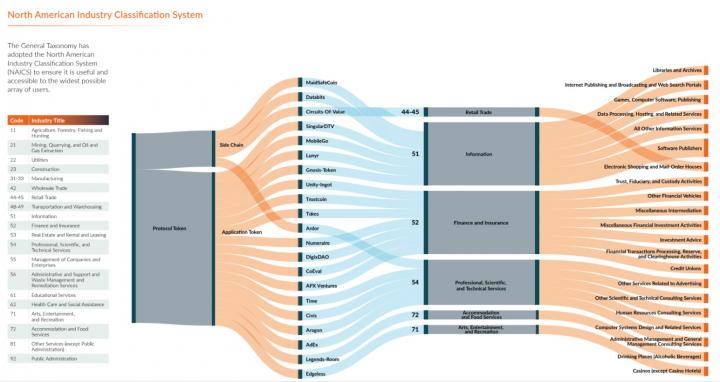Launched this week, BNC’s General Taxonomy For Cryptographic Assets is intended as a classification tool for investors, regulators, asset managers and developers to better inform their crypto decision making, says BNC Head of Research Rafael Delfin, and marks a critical step forward in the maturation of cryptographic assets as an investment class.
“The advent of blockchain technology is enabling mass collaboration across world markets and is generating millions of transactions and interactions daily. For this rapidly-evolving industry to be effectively evaluated and interpreted, a consistent and comprehensive global classification is important.”
Delfin says the General Taxonomy will streamline the process for evaluating cryptocurrency assets by providing a platform where users can access a collated pool of data for individual assets — including naming conventions and a hierarchical asset classification system of over 60 quantitative and qualitative metrics. He says stakeholders will be able to more effectively:
judge the strengths and weaknesses of different distributed protocols in an objective and consistent manner
assess the impact of distributed-ledger-based assets on global, regional and local industries
analyze sector and industry contributions to portfolio performance and compare industry sector exposures versus peers or benchmarks
construct consistently defined global or industry-based rotation research, development and investment strategies
Cryptographic assets — the new asset ‘superclass’
For anyone planning an asset allocation strategy, Robert Greer’s seminal 1997 paper 'What is an Asset Class, Anyway?' has always made compelling reading. In it, Greer identified three ‘superclasses’ of assets — Capital Assets, Consumable/Transformable Assets, and Store of Value Assets — and categorized a range of traditional assets by their respective superclasses.
More recently, in their 2016 white paper 'Bitcoin: Ringing The Bell For A New Asset Class' ARK Invest’s Chris Burniske and Coinbase’s Adam White explored the idea of Bitcoin being the first of an entirely new ‘cryptocurrency’ asset class — which could, in principle, simultaneously function across all three of Greer’s asset superclasses. Delfin says this unique characteristic positions crypto as not only a new asset class, but in fact a new asset superclass — created by distributed ledger technology (see figure 1).
( )
)
Figure 1: The four asset superclasses
Sources: “Bitcoin: Ringing The Bell For A New Asset Class” by Chris Burniske and Adam White, 2016; and “What is an Asset Class, Anyway?” by Robert Greer, 1997.
By focusing on fundamental economic similarities, the General Taxonomy divides the superclass of cryptographic assets into two broad families of asset classes — General Cryptographic Assets and Protocol Tokens (see figure 2).
( )
)
Figure 2: Families of crypto assets
After the first level of analysis cryptographic assets are then classified according to the technical features of their underlying protocol. Each family is further divided into two subcategories. General Cryptographic Assets are subclassified in Payment Assets and Platform Crypto Assets, while Protocol Tokens are subclassified by Side Chains and Application Tokens. Where appropriate, the General Taxonomy also defines assets according to their NAICS industry classification (see figure 3).
( )
)
Figure 3: Assets defined according to NAISC classifications
As the cryptocurrency market cap continues towards the 1 trillion mark, the General Taxonomy delivers a one-stop-shop for investors, regulators and consumers alike to classify cryptographic assets — while also offering increased transparency to enhance the reputability of the industry overall. “BNC’s Taxonomy further supports joint efforts to grow and enhance the crypto investment experience through in-depth, data-driven analysis,” says Global Advisors director Daniel Masters.
For more information and to download a sample of BNC’s General Taxonomy For Cryptographic Assets, click here. https://bravenewcoin.com/general-taxonomy-for-cryptographic-assets